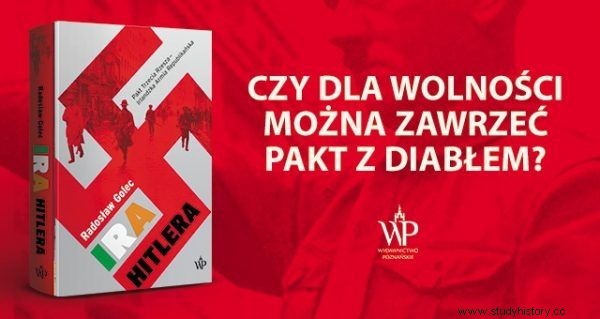Since the IRA declared war on Britain on January 15, 1939, no Englishman could feel safe. They didn't know the day or the hour. The coup could have happened at any moment. The terrorists were unremarkable and could appear anywhere, which made them deadly.
1. The beginning of the sabotage campaign
On January 15, 1939, posters appeared in the streets of Dublin and many English cities, urging the king to withdraw his troops from all Irish lands. At the same time, the Irish Republican Army declared war on Britain.
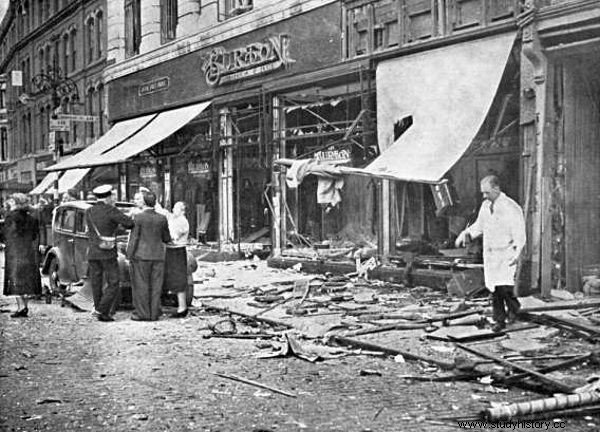
Traces of an explosion in Coventry (photo:Simon Shaw, public domain license)
On January 16 in the morning, the English capital was shaken by two explosions, which marked the beginning of a long series of attacks, known as Plan S (Sabotage Plan). As Radosław Golec writes in his book "Hitler's IRA" devoted to the cooperation of the IRA with Nazi Germany:
The first [explosion] created a huge crater just outside the city's main power station. Hundreds of panes blew out of the window frames. A second explosion occurred in another part of the city shortly after 6.00 am, causing panic among the inhabitants. They watched with horror through the windows the flames of fire contrasting with the surrounding darkness and the clouds of smoke rising above the streets.
However, the IRA did not stop there. There were three more explosions that day, in three other cities. These actions were not calculated on the large number of victims. The Irish wanted fear.
2. Coventry explosion
After the end of the summer of 1939, as the atmosphere in Europe grew increasingly dense, the IRA targeted Coventry, an industrial center east of Birmingham. On August 25, in the early afternoon, a member of the Irish Republican Army left a bicycle leaning against a curb on one of the busy main streets. There was a 2.3 kg bomb in his basket.
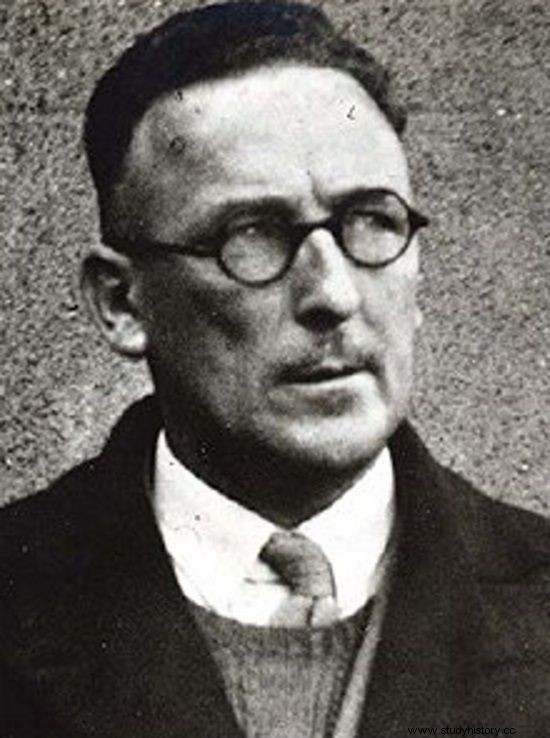
James O'Donovan, one of the key figures in Plan S, which involved the bombings (photo:public domain)
The explosion took place at 2:32 pm. Sixty people were injured as a result of the explosion, and there were also five deaths. Among them was the young Elsie Ansell. A twenty-one-year-old woman was unlucky enough to be closest to the site of the blast. As a result of the explosion, her body was so massacred that it was impossible to identify it. She was recognized by her engagement ring. The funeral took place in the same church where she was supposed to get married. As Radosław Golec writes in the book "Ira Hitlera":
The front of the store where the bomb was left disappeared from the ground, and glass covered the street, injuring passers-by. Police searched all homes where Irish people were detained. As a result of the attack in Coventry, two IRA members were sentenced to death. One of them was not involved in the bombing at all!
3. Bomb on the bus on the M62
On February 4, 1974, the IRA proved that it had no intention of letting go of the English soldiers, even if they were off-duty and with their families. At that time, there was a railroad strike. Soldiers and their relatives, traveling from Manchester towards Catterick base in northern England, boarded the coach. Several dozen people were driving it. There was an explosion in the vehicle moving on the M62 road shortly after midnight. The force of the blast was so great that she scattered the bodies of the victims in a radius of over two hundred meters.
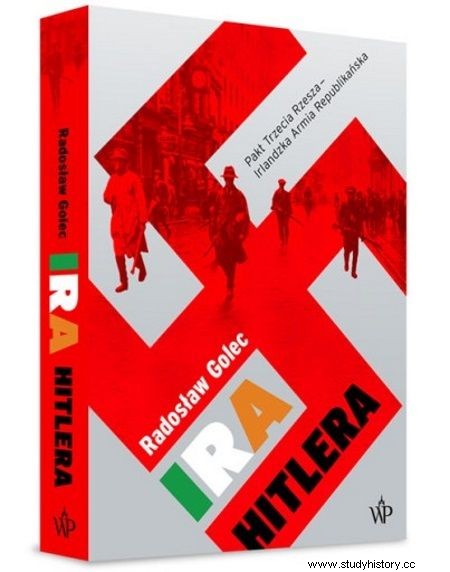
As Rogelio Alonso writes in the book "Killing for Ireland", 11 people were killed then, including 8 soldiers. The other three are civilians - the wife and children of one of the soldiers. It was 23-year-old Linda Houghton and her two sons Lee (5) and Robert (2). The macabre balance grew in the following days. One of the more than fifty people injured in the explosion died in the hospital.
The British were shocked by this attack. One of the politicians associated with the Irish Republican Army attacked in the interview began to explain that the terrorist attack took place because the IRA intelligence had wrong information. According to his data, only soldiers were to travel by bus. British law enforcement forces sought to quickly catch the culprits. After a chaotic investigation, mentally ill Judith Ward was identified as a suspect, claiming that she was behind many of the bomb attacks. She later withdrew her testimony, but was eventually convicted on fabricated evidence. The IRA has denied any connection to the woman. Years later, the appellate court acquitted her, calling her conviction a serious mistake of the judiciary.
4. Lethally dangerous going out for a beer after payment
November 21, 1974 was a dark day for Birmingham. While the IRA never officially took responsibility for the two bombs that went off at the time, one senior member of the organization recently admitted that she was behind the attacks. In the city center, explosives were planted in pubs on the day of the penultimate payday before Christmas. The premises were packed to the limit. It was no different in "Tavern In The Town" - a bar popular among students and young working people. This well-liked restaurant in the basement was targeted by terrorists.
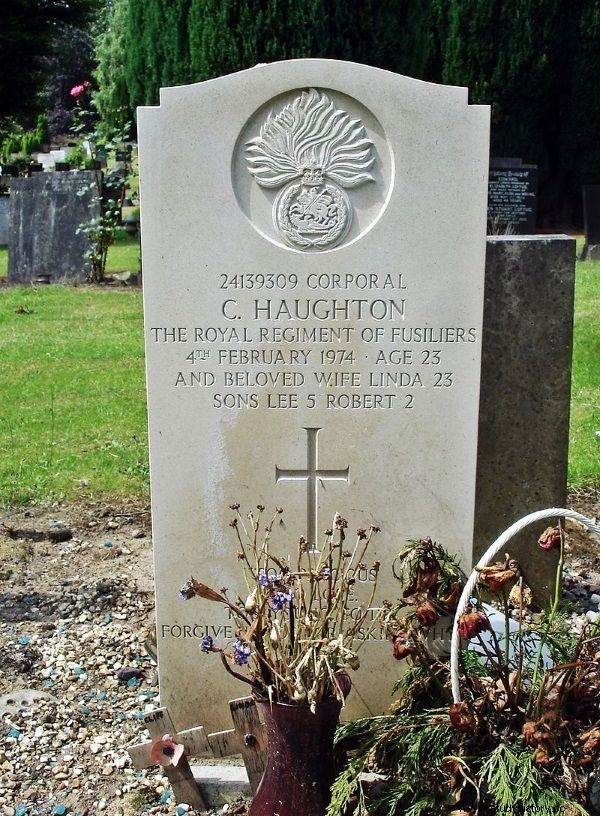
Grave of the Haughton family who died in the blown up coach (photo:Plucas58, license CC BY-SA 4.0)
The second target was "Mulberry Bush," also a well-liked pub that was enjoyed by a large crowd. Shortly after 8 p.m. someone called the Birmingham post office to warn of the bombs. A few minutes later there was an explosion. According to the "Encyclopedia Britannica", 10 people were killed in Mulberry Bush, and 11 people were injured in "Tavern In The Town", a total of nearly two hundred. Within hours of the outbreak, six Irish, later known as the Six from Birmingham, were arrested.
There was also a third bomb, found about two miles from the site of one of the explosions. It was supposed to detonate at 11 p.m., but the detonator did not work. The police found and secured the cargo and it was dropped off the next morning.
5. Bomb Euro
When football fans came to Great Britain for the European Championships in 1996, they expected football emotions and fun. Instead, the Irish Republican Army gave them real moments of horror. On Saturday, June 15, 1996, the day before the Russia-Germany game was to be played at the city stadium, Manchester exploded.
At 9.20am, the IRA managed to drive into the city center in a white truck carrying 1,500 kilograms of explosives. It was the largest bomb in Britain since the Second World War. At around 9.40 a local TV station got a warning about the load planted. It was a man with a distinctly Irish accent.
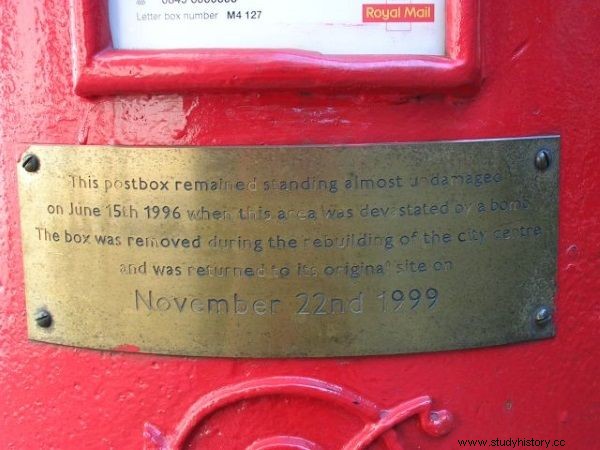
A commemorative mailbox that survived the explosion almost intact (photo by Keith Williamson, license CC BY-SA 2.0)
The police knew the threat was serious. Up to 80,000 people were in the area of Corporation Street where the explosives truck was parked around 10am. Evacuation was ordered immediately. Sappers entered the action at 10:46, but they failed to disarm the cargo in time. At 11.17 there was an explosion. The largest since the war, it literally wiped the facades of buildings off the face of the earth. The bomb crater was several meters.
The force of the explosion was so great that the debris and glass ejected by it hit a police cordon standing approximately 400 meters from the bomb and the civilians behind it. Over 200 people were injured, but thanks to the massive police action, no one was killed. The coup almost ended in a much more tragic end. People accustomed to the threat did not want to stop running errands or serving customers. Within minutes, the first injured were taken to the Manchester Royal Infirmary. Losses over £ 1.2 billion.
Information sources:
- Alonso R., Killing for Ireland, Routledge 2007.
- Coogan T., The IRA, Palgrave MacMillan 2002.
- Golec R., Hitler's IRA , 2018 Poznań Publishing House.
Learn the history of the strangest alliance of World War II:
